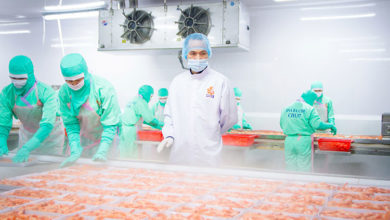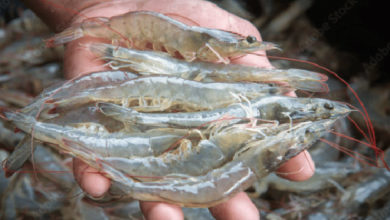Mekong coastal district expands clam farming area
Farmers in the coastal district of Gò Công Đông, the largest clam producer in Tiền Giang Province, have received high selling prices after expanding the clam breeding area this year.
The district has bred 2,200ha of clam this year, up 200ha against last year, according to the local Agriculture and Rural Development Bureau. Clam farming areas are mostly in Tân Thành Commune, which is the province’s largest clam producer.
The Cửu Long (Mekong) Delta province has set up concentrated clam farming zones in coastal districts, mostly in Gò Công Đông and Tân Phú Đông. However, only Gò Công Đông’s Tân Thành Commune has set up a large area, covering 2,000ha. Breeding clams in alluvial grounds along coastal areas has offered a good income for many farmers in recent years.
Đoàn Thanh Hưng, chairman of the Tân Thành Commune People’s Committee, said traders were buying clams at VNĐ19,000 – 21,000 a kilogramme, up VNĐ 2,000 against the same period last year. Trần Văn Chỉ of Tân Thành said he earned more than VNĐ500 million (US$21,400) a year in profit from farming clams on a 6ha area. Farmers in the district harvested more than 5,500ha of clams in the first quarter of the year, according to the bureau.
However, clam farming has faced challenges, including diseases that cause clams to die en masse during the dry season. As many as 50 hectares of clams in Tân Thành have been affected by disease this year.
To promote the district’s advantages in breeding aquaculture, including clams, the district has improved agricultural extension activities and provided advanced farming techniques to farmers, according to the bureau. The district has also told farmers to breed aquatic species according to established schedules and have measures to prevent disease and protect the environment.
In the first quarter, it organised training courses on farming plants, animals and aquatic species for more than 1,700 farmers. The district plans to set up a 30ha area to breed parent clams as farmers now have to buy juvenile clams for breeding from the neighbouring province of Bến Tre and HCM City.
Transport from localities to the province has resulted in the deaths of juvenile clams. One kilo contains around 900 juvenile clams, which are normally bred for 18 months to reach market size.
Clams are one of the district’s traditional farmed aquatic species, with an average yield of 10 tonnes per ha per crop. The district harvested 5,500 tonnes of clams in the first quarter of the year.
VNN






